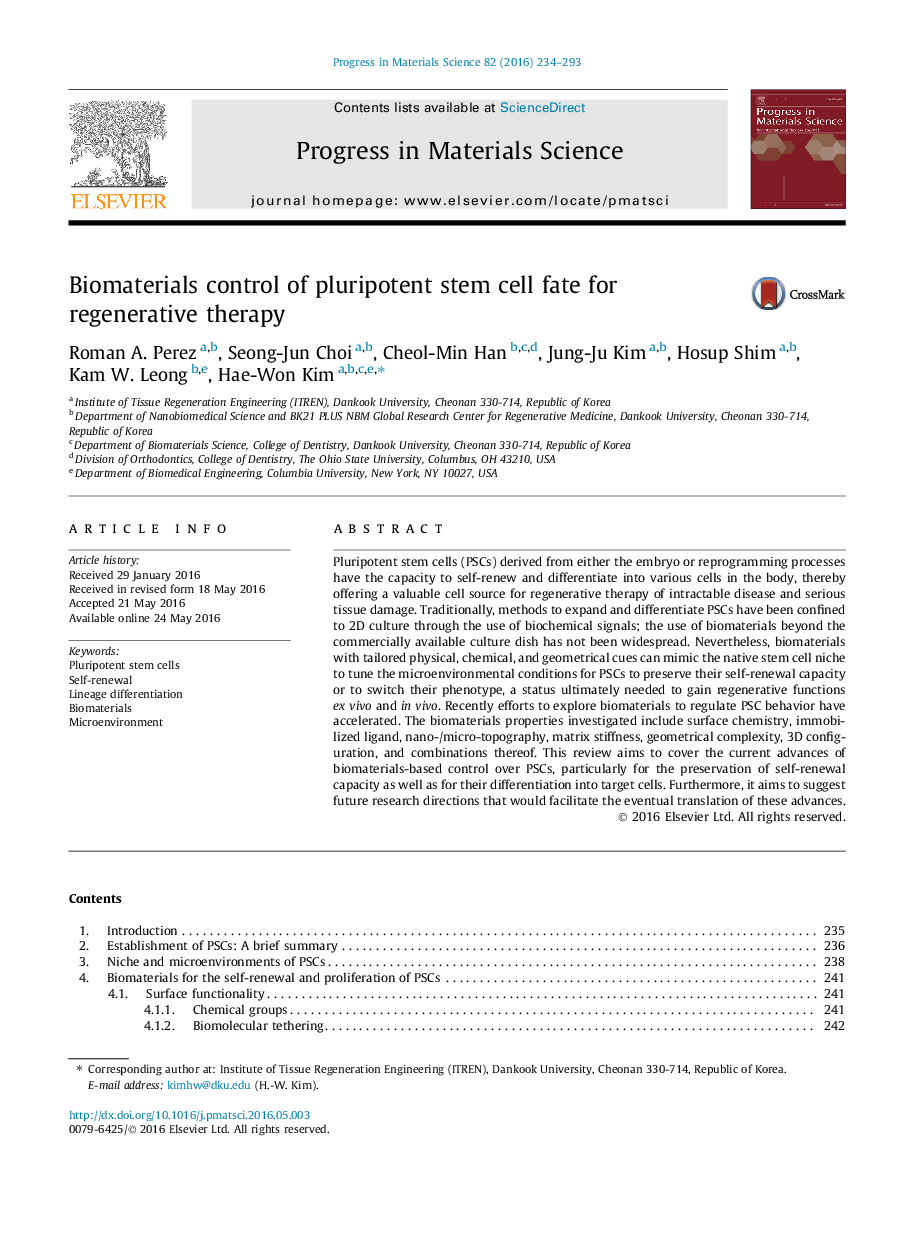| Article ID | Journal | Published Year | Pages | File Type |
|---|---|---|---|---|
| 1655821 | Progress in Materials Science | 2016 | 60 Pages |
Abstract
Pluripotent stem cells (PSCs) derived from either the embryo or reprogramming processes have the capacity to self-renew and differentiate into various cells in the body, thereby offering a valuable cell source for regenerative therapy of intractable disease and serious tissue damage. Traditionally, methods to expand and differentiate PSCs have been confined to 2D culture through the use of biochemical signals; the use of biomaterials beyond the commercially available culture dish has not been widespread. Nevertheless, biomaterials with tailored physical, chemical, and geometrical cues can mimic the native stem cell niche to tune the microenvironmental conditions for PSCs to preserve their self-renewal capacity or to switch their phenotype, a status ultimately needed to gain regenerative functions ex vivo and in vivo. Recently efforts to explore biomaterials to regulate PSC behavior have accelerated. The biomaterials properties investigated include surface chemistry, immobilized ligand, nano-/micro-topography, matrix stiffness, geometrical complexity, 3D configuration, and combinations thereof. This review aims to cover the current advances of biomaterials-based control over PSCs, particularly for the preservation of self-renewal capacity as well as for their differentiation into target cells. Furthermore, it aims to suggest future research directions that would facilitate the eventual translation of these advances.
Related Topics
Physical Sciences and Engineering
Materials Science
Nanotechnology
Authors
Roman A. Perez, Seong-Jun Choi, Cheol-Min Han, Jung-Ju Kim, Hosup Shim, Kam W. Leong, Hae-Won Kim,
